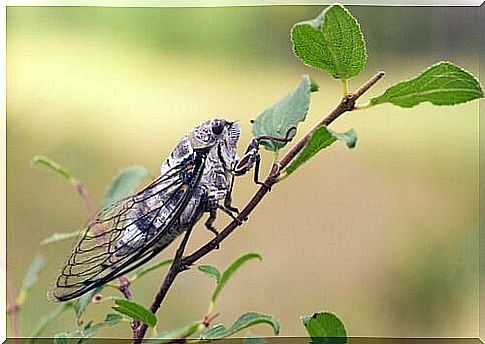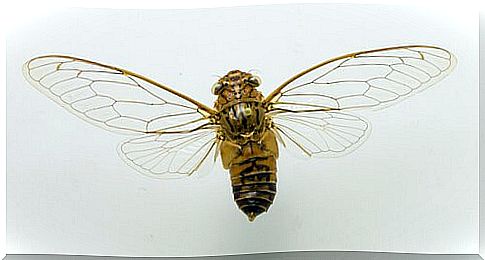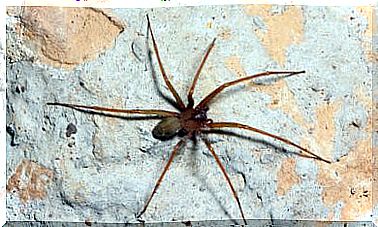Meet The Cicada Song

They sing and emit a very characteristic sound in summer, because they want to mate or because it’s hot. Thus, they announce the arrival of the hottest time of the year, when the sun shines brightest. How is the cicada song and its characteristics as an insect?
A curious life cycle
The cicada’s life cycle confuses and instigates scientists and nature admirers. This occurs between fields and forests, slopes and plains on every continent except Antarctica.
Nymphs live underground until an impressive 17 years of age, but adults live in trees for a very short time: just a few weeks.
Despite its enormous size, which can reach six centimeters, observing a cicada with the naked eye is difficult.
It manages to camouflage itself with its shades similar to those of branches and trees; when they are quiet, they are practically invisible.
The cicada has a robust body, a broad head and two large eyes. Their oral suction apparatus allows them to break through the bark of trees and feed on their sap.
The clear, well-projected wings have vein-like shapes and 11 black dots; its shapes and colors vary according to the species.
A big family
These hemiptera insects make up the Cicadidae family . They are divided into subfamilies made up of tribes. The subfamily Cicadinae , of translucent cicadas, is made up of 12 tribes.
Seven species belong to the subfamily Tibiceninae or cicadas with hidden timbal. The shrill cicadas are organized into 12 tribes in the subfamily Tettigadinae ; 12 are also the tribes that make up the subfamily Cicadettinae , or cicadas with visible timbals.

The cicada has received different names since ancient times. Furthermore, there are peoples who consider them a symbol of rebirth and good news.
They are specimens of daytime habits, solitary and sedentary. They feed on plants and shrubs, which makes them a kind of epiphytic insect and at the same time arboreal. The chicks or nymphs feed on the sap from the roots.
Discover the song of the cicada
The chirping of the cicada is a shrill and, for many, irritating sound they make in the morning and at night; also in the hottest hours.
It’s the males who sing. They call females to mate and may also do this to mark territory or as an alarm signal.
Sound is produced in the abdomen, where the male cicada has a stridulatory organ, called the eardrum, which is formed by membranes.
These are a kind of air pockets that inflate and deflate; two cavities make up the resonance box that amplifies the sound.
In females, there is a tympanic organ located in the abdomen as well. This allows them to hear the males singing or singing from more than a mile away. The female cicada responds.

in the bark of the trees
Thanks to the ovipositor, she places between 400 and 600 eggs in holes that she drills into the bark of trees. When hatching in autumn, the chicks or nymphs fall to the ground; where they excavate galleries until they find roots on which they feed.
There they can live between 2 and 17 years and experience up to five life cycles.
A short life outdoors
When the larvae leave the ground, a change takes place that transforms them into adults with wings and genitals suitable for reproduction.
It’s a short outdoor life cycle of just a few weeks. At this time, they climb trees, change their skin, sing, fly and mate.
These insects have some vital risks: females die after breeding. Males can die from the sound pressure of their stridulatory device.
Such is the mysterious spectacle of cicadas, an enigmatic cycle of life that attracts biologists, entomologists and nature lovers.
When the singing of the cicada is heard, know that it is a sound that will last all summer, it is a unique life cycle in the animal kingdom.
The cicada’s long existence under the ground and a short adult phase of flight, song and death made it the protagonist of fables and stories. These animals also appear regularly in the history and traditions of various countries.








